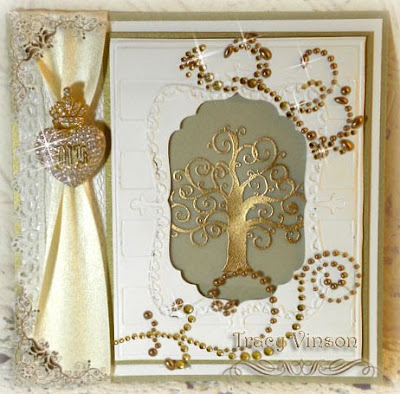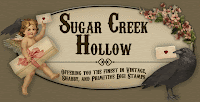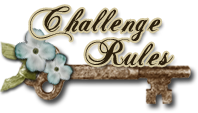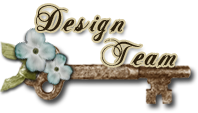How To Prevent Your Digi's and Photos From Being Downloaded and STOLEN
It seems there is an ever growing problem of dis-honest people who are either stealing your photo and claiming it as theirs ~OR~ they are taking our water-marked digi's and editing out the watermark--THIS IS ILLEGAL, THIS IS STEALING, and we are going to put a stop to that TODAY!!!
By following these simple steps, you can disable ANY mouse clicks on your blog, and prevent others from saving your images. Here is how.
First we are going to tweak your HTML code just a teensy bit. Go into your settings, click DESIGN, and then EDIT HTML.
Now find this in your code <body>
(to prevent looking for hours, press your control key and your F key together. A pop-up box will appear in the top left corner that you can type this code into. Blogger will then find it for you. NOTE: if you are blocking pop-ups you will have to disable it to allow this function)
Remove the word body between the parenthesis and replace with this code:
<body oncontextmenu="return false">
Now click on your PREVIEW button...this should disable your RIGHT CLICK mouse. Click SAVE and you are DONE. This step never has to be repeated again. You have permanently disabled your right mouse. However, we all know that by enlarging a photo, you can still right click it and save it...so...complete the following and you are good to go.
After you have finished your post or if you want to edit photos already on your blog, follow these steps to disable your LEFT CLICK mouse. Click “Edit HTML” in the post editor, and find the pictures html code.
You will see the href=”…” tag from there. I have highlighted mine in blue for you to see.
THIS IS THE PART YOU WANT TO REMOVE
Now your code should look something like this:
That's all there is to it...you're done!!! Remember to do this on EVERY photo you upload to blogger.
Now,when you are viewing your post, you’ll notice that all your images are un-clickable and a simple arrow will appear if you hover your mouse over.
When you purchase a Digi Stamp, not only are you buying the image, you are also buying the license to be able to use that stamp. These simple rules are what I use for my Digi Company, so be sure you check with the particular person that you are buying your image from to see what their guidelines are.
•Please do not re-sell the images – most license agreements will state that the digital stamp images cannot be resold.
•Please do not use to make your own stamps – most license agreements will state that the digital images cannot be used to make rubber or clear stamps.
•NO SHARING – many digital stamp companies state that digital stamps cannot be transferred to other people.
•Give credit where it is due – the license will state whether credit needs to be given or the artist's copyright information displayed.
•Commercial Use – the license will also outline whether the digital stamps can be used to create items for sale. This will either be in the form of an angel policy or a commercial license.
•Other – other specific terms may be included depending on the company or artist. Be sure you check the companies Angel Policy if you intend on making projects with their images to re-sell.
Note: this does not imply that all licenses are the same, so do check each individual license before buying a digital stamp and ask the artist or company if you have any specific questions.
Please let us know if this tutorial was helpful to you. We are here to help you succeed and hopefully prevent future images and photos from being stolen. ~by~
Tracy Vinson
Sugar Creek Hollow
~~~~~~~~~~~~~~~~~~~~~~~~~~~~~~~~~~~~~~~~~~~~~~~~~~
EMBOSSING A DIGI STAMP
I would love to teach you today HOW to emboss a Digi Stamp. Follow these simple instructions and you are good to go!
1.Start with a slick- surfaced paper. Vellum or glossy cardstock works best.
2. Set your printer to the "BEST" print quality and set for glossy paper or photo paper...which ever you have--this allows MORE ink to be disbursed on your paper.
3. Have all of your embossing items ready before you ever start the print...even the top should be removed from your powder. You don't want this to dry even a second or two.
4. The instant your image comes out of the printer, pour on your embossing powder.
5. You are now ready to remove excess and heat emboss.
.jpg)
As you can see, in this photo I have embossed on Vellum paper. You want your ink to stay wet as long as possible. If you are using a porous paper that soaks in the ink, you will not be able to emboss...the ink HAS to stay wet for a period of time on top of your paper.
Here are some photos of other Digi Stamps that I have embossed.
Not much else to tell other than I did lots of dry embossing with my cuttlebug and several layers. I do, however, LOVE using this gorgeous silk ribbon from May Arts. I just cannot get enough of that!
Here is an example where I fed TIN FOIL through my printer, and then embossed with black embossing powder. This made a beautiful topper for my ornament.
And finally, this one is not really embossing but I used the Heat & Stick Powder from Stampin Up on my cherries here.
Please let me know if this information was helpful to you. I would love to see digi's that you have embossed as well.
ADDING A WATERMARK TO YOUR PHOTO'S
by Tracy Vinson
Today I am going to show you how to add a watermark over top of your photo's using Photoshop. I use the CS5 version but basically any one will work for this simple process.
For your convenience, I am including the text on the photo's as well. You can simply print each of them for future reference if you want a hard copy.
1. Open your photoshop and select OPEN under FILE. This will allow you to import the photo you want to Watermark.
2. Next, we are going to add your text. Select your text tool on the left. This will allow you to insert a text box over top of your photo.
3. Now, go over to your color box on the top right and select the color of text you want. I am using 50% gray.
4. OK...I have a rough draft of my text. However, we want that text to "pop" off of the photo, so we're going to give it a bit of dimension.
5. On the right side of your menu, you will see each layer. RIGHT click the text layer and you will see the menu below. Select BLENDING OPTIONS.
6. Now from that menu, select DROP SHADOW and BEVEL and EMBOSS. Make sure these boxes have checks in them.
7. Almost done....one really important last step is to blend this all together in one image. This step basically "adheres" the text to your photo. Click LAYER and then click FLATTEN.
You are finished. Just save your photo as you normally would and you are ready for your blog posting.
Now, if you don't have Photoshop and still want to do your watermarking, there is a great photo editing tool which I use DAILY. It is called Picasa and is free from Google. Simply click
HERE to download the program to your system and to see their free tutorial.
Vintage Card Tutorial
by Linda Coughlin for Sugar Creek Hollow
What is Vintage? The term vintage was originally a wine-making term, referring to the batch of wine produced in a certain year or by a certain vineyard. Over the years, it has been broadened to refer to automobiles, clothing and numerous other items. More recently, it has been used to describe second-hand merchandise originating from an earlier era, i.e., vintage clothing.
What do we mean when we refer to a card-making style as vintage? It’s a loosely used term to describe a card/project that looks old. The aged appearance can be for a variety of reasons. The project may:
• be distressed (ink sponged or scuffed/torn edges or folded/crumpled)
• include products that look old
• use an image of an old object
• use rustic looking image
• use paper of a pattern, color or design from yesteryear
• include embellishments that are old or made to look old
Vintage is my favorite style of crafting. I get a lot of comments from people saying that they love the style and look but they are hopeless at doing vintage work. Since the strength of our project line here at Sugar Creek Hollow is vintage and primitive, we thought a little tutorial might help those vintagely-challenged crafters out there.
Step 1: Where to start? Start by selecting an image. SCH offers a wide variety of lovely vintage and primitive digital images that will make up into beautiful vintage projects. For this project, I have selected the Tiffany Lamp and Berry Frame. I changed the image color from black to brown. For the lamp print size I selected 3.15” and 4” for the frame This allowed the lamp to fit inside the frame. I printed it on my home computer and heat-set the ink using my embossing heat tool.
Step 2: Paper selection. Give a little thought to the era that the image is depicting. I look for a design and color that looks antique to me. I like flour-de-lis, flourishes, botanical-type drawings, brocade, damask, etc.
For this piece, I selected the image of a Tiffany lamp. Tiffany began making his handmade stained glass lamps in the late 1800’s and they became popular in the early 1900’s. So I want my vintage card to evoke a feeling of an era around 1900.
Select colors and textures that will compliment your image and evoke the period you are trying to replicate. For a sepia toned Tiffany lamp, thinking about the early1900’s era brought to mind images of stamped metal and floral patterns. So I selected two brown-toned K&Co. papers as well as a piece of textured brown card stock.
Step 3: Layout. There is nothing definitive about your layout. Any layout that works with your image will work for a vintage card.
Step 4: Creating your main image. Let’s start the actual crafting work by creating our main image. I decided to make my entire card to resemble a sepia toned photograph. I used two SCH images – the Tiffany Lamp and the Berry Frame. I changed the color of the images in PSE7 to brown, layered the lamp over the frame using Publisher, printed and heat set the main image. Then I closely trimmed it out around the frame.
Next I ink distress the image. Because the distress ink I am using is very dark (Vintage Photo), I sponge off some of the ink by tapping the sponge on my paper blotter a time or two before I move the sponge onto my craft sheet. Starting about two inches from the edge of the image panel, I sponge in circles on the craft sheet, moving slowly toward the edge of the image panel.
I work around the outer edge bringing the color in gradually. I work all the way around once, then repeat around the outer edge several more times, each time bringing the color a bit closer to the center. You decide how far into the panel you want to bring the distress ink. Usually I make a mask to cover my image, but with this I didn’t get too close to the image because I wanted to show some bright light close to the lamp.
Once I am satisfied with the amount of ink distressing on the panel, I sponge ink directly onto the edge of the panel to darken edge.
I also printed a second copy of the lamp and trimmed out the lamp shade. After coloring the glass in my Copic marker, I applied Crystal Effects to give the shade a glassy look. When dry, I adhered this lampshade over the original with a small glue dot, which gave it a very slight 3-D effect.
Step 5: Create your background layers. I like to use multiple layers on a card. For me, visually, the more layering, the richer looking the card (that’s not to say that CAS cards can’t look very striking too).
The brown card stock was embossed using the Cuttlebug Textile embossing folder, which I think has a vintage look to it. It was sanded to review the white core.
After revealing the white core, the entire panel was sponged with Vintage Photo distress ink. Since ink was being applied to a dark colored panel, I inked the sponge and applied it directly to the paper without sponging off on a paper first.
If I had been sponging a lighter color paper or just at the edges, I would have started on the craft sheet, sponging in small circles and working toward the edge of the paper, continuing in small circles along the edge of the paper. Each time I re-ink the sponge, I start sponging on the craft sheet and work toward the panel.
The edges were then scissor distressed. This is done by opening the scissors about half an inch and dragging the opening along the edge of the paper.
Don’t be concerned if the paper rips. That adds extra distressing and character to your vintage piece.
After scissor distressing the edges, they were sponged well with vintage photo.
Step 6 – Assemble – Now that all the layers are finished, it is time to assemble them. Before I glued the first two layers together, I punched the corners of the upper layer with a corner punch that I thought added to the vintage feel. Then I machine stitched a straight stitch around the parameter. Next I glued the die cut K&Co. layer on, then wrapped a piece of wide brown lace around and tied it in a knot. Craft foam was glued to the back of the main image panel which was then layered over the lace. I added a sentiment tag that I had also ink distressed. The sentiment was printed on my computer in the same brown ink as the main image and likewise distressed as the main panel. I added a brass jewelry spacer and brad.














.jpg)































.jpg)













